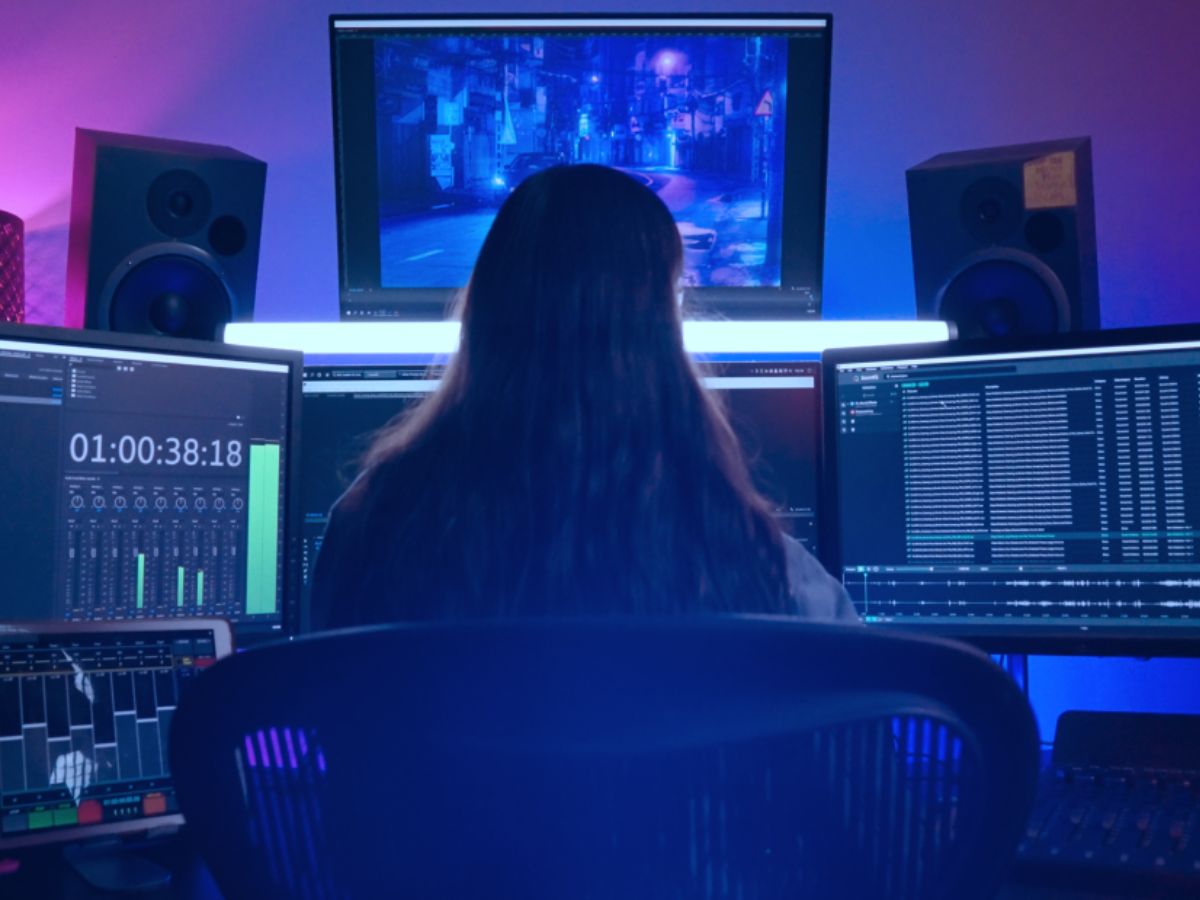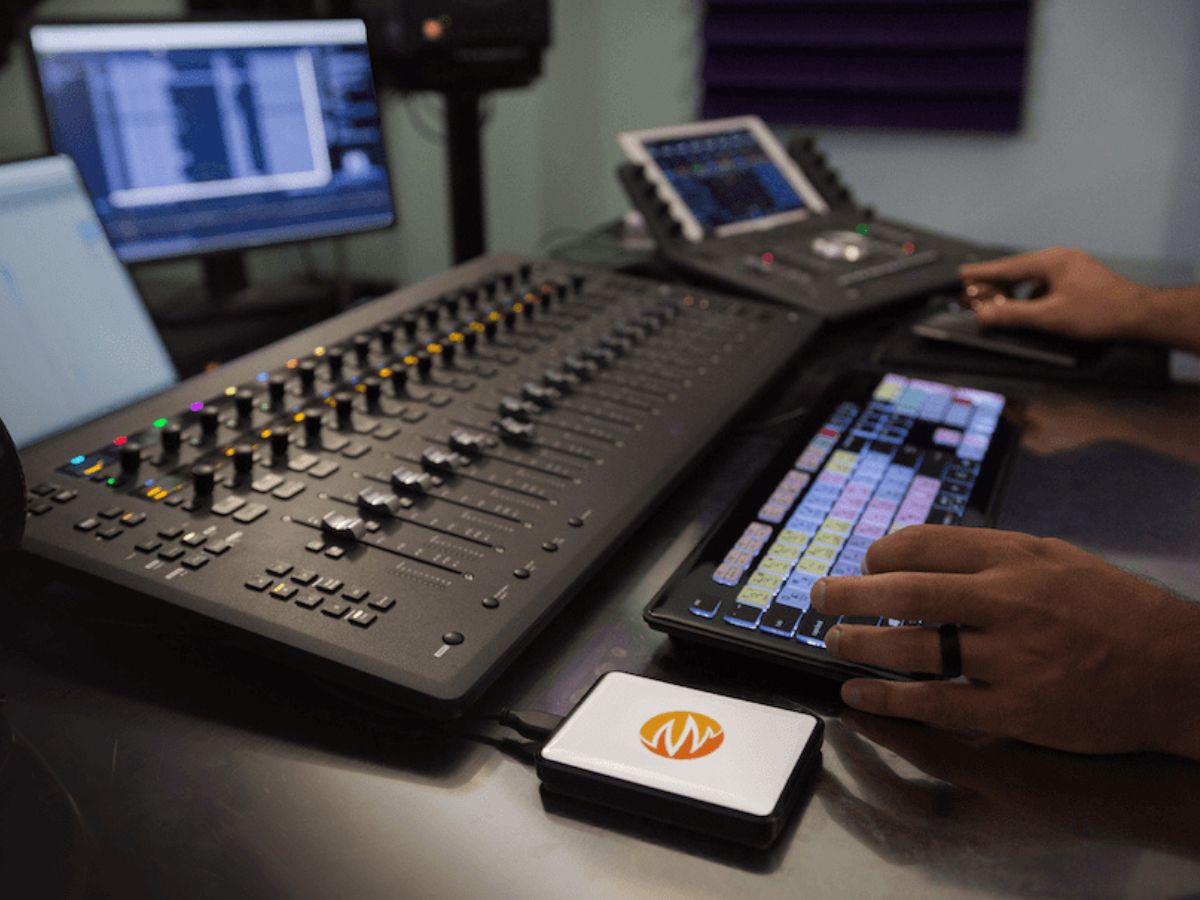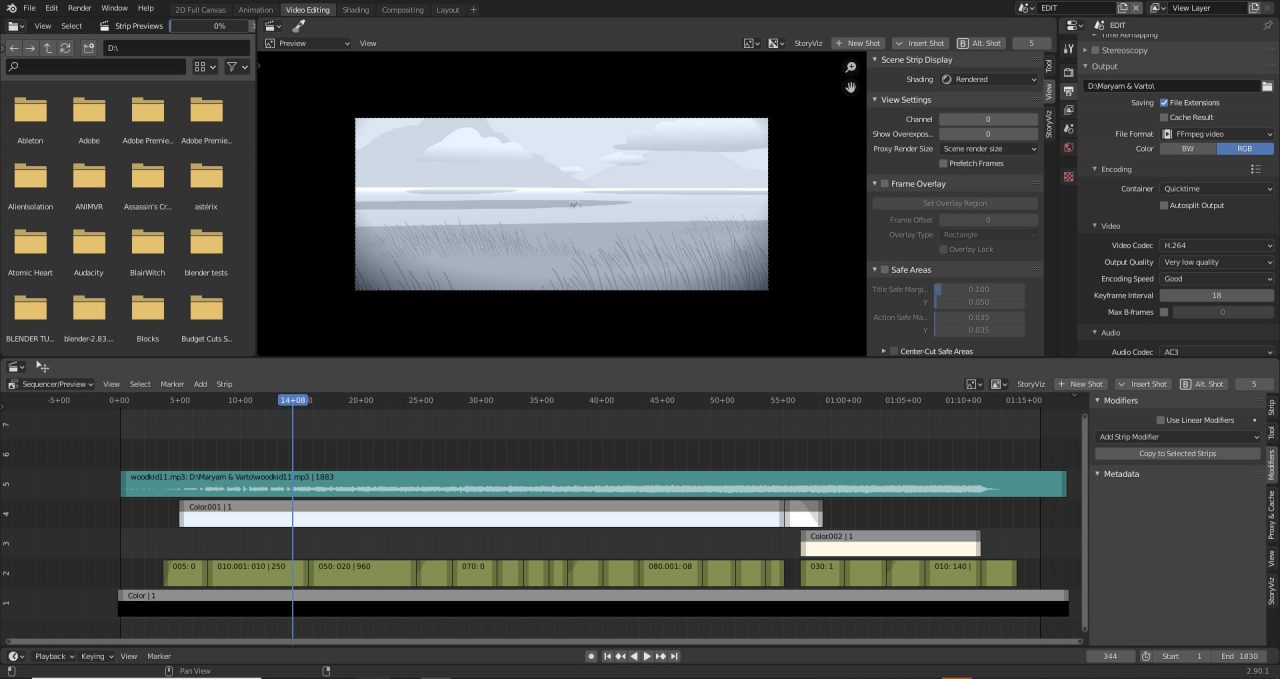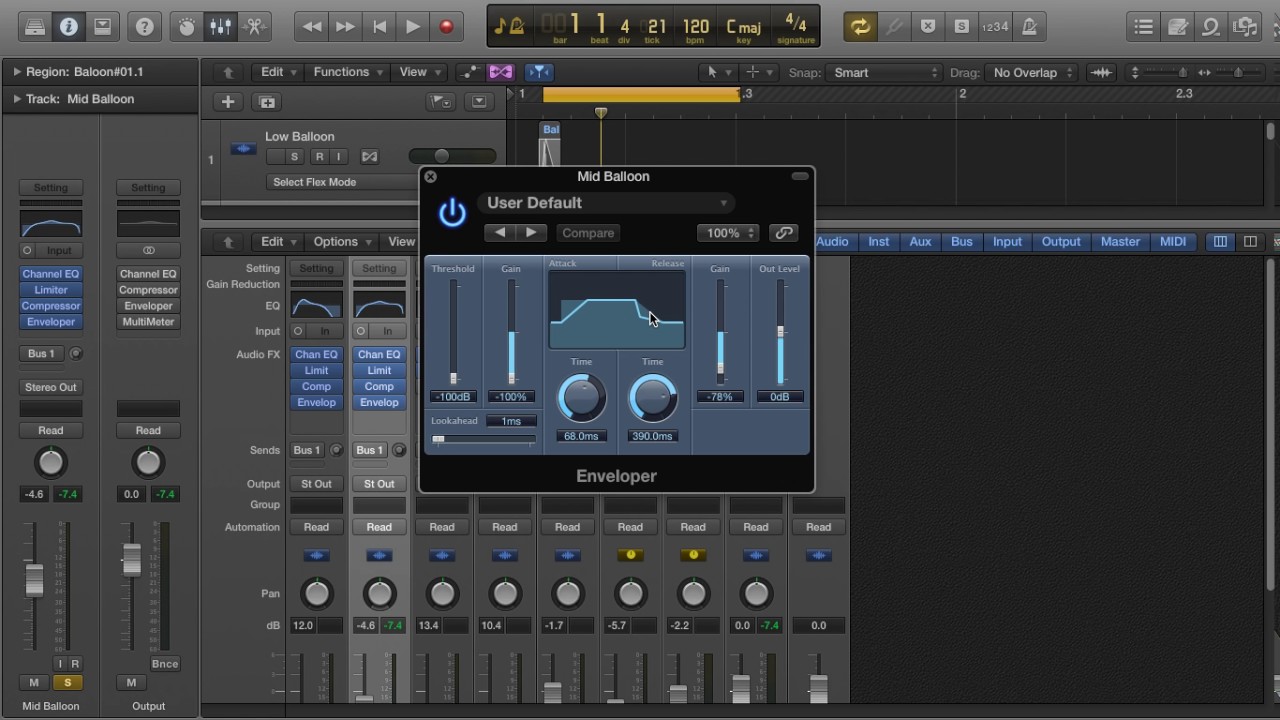Home>Production & Technology>Sound Effects>How They Made Sound Effects For Dragon Ball


Sound Effects
How They Made Sound Effects For Dragon Ball
Published: November 9, 2023
Discover the fascinating behind-the-scenes process of creating iconic sound effects for Dragon Ball. Uncover the secrets of crafting captivating soundscapes and bringing the world of Dragon Ball to life.
(Many of the links in this article redirect to a specific reviewed product. Your purchase of these products through affiliate links helps to generate commission for AudioLover.com, at no extra cost. Learn more)
Table of Contents
Introduction
Welcome to the world of Dragon Ball, where epic battles, superhuman abilities, and intense energy blasts reign supreme. As a fan of the iconic anime series, you may have wondered how the captivating sound effects that accompany the action-packed scenes are created. From the powerful energy blasts to the mesmerizing transformations, sound designers play a crucial role in bringing the world of Dragon Ball to life.
In this article, we will delve into the fascinating world of sound effects in Dragon Ball and explore the meticulous process that goes into creating the auditory elements that enhance the viewing experience. From designing the voices of beloved characters to capturing the impact of explosive fight scenes, every sound effect is carefully crafted to immerse the audience in the fantastical universe of Dragon Ball.
So, sit back, get ready to power up your curiosity, and join us on a journey through the incredible soundscapes of Dragon Ball. Let’s discover how the sound effects that accompany the battles, transformations, and everyday occurrences make this anime series so incredibly memorable.
Creating the Sound of Energy Blasts
One of the most exhilarating aspects of Dragon Ball is the breathtaking energy blasts that characters unleash during their battles. The thunderous impact of these attacks is not only visually impressive but also acoustically stunning. So, how are these explosive sound effects created?
Sound designers use a combination of creativity, technical expertise, and experimentation to craft the perfect sound for energy blasts. Firstly, they often start by searching for real-world sound recordings that have the desired characteristics, such as powerful explosions or roaring thunder. These raw recordings serve as the building blocks for the energy blast sounds.
Next, they manipulate and layer the recorded sounds using various digital effects and processing techniques. They might stretch and pitch-shift the recordings, add reverberation to give them a sense of space, and apply equalization to enhance certain frequencies. This intricate process allows sound designers to create unique and otherworldly energy blast sounds that match the intensity and scale of the battles in Dragon Ball.
To make the energy blasts even more dynamic and impactful, sound designers also add dynamic range compression. This technique boosts the quieter parts of the sound to be more audible while limiting the louder parts to avoid distortion. This helps to create a sense of power and intensity when the energy blasts are unleashed.
Additionally, sound designers often incorporate elements of Foley, the art of creating sound effects using everyday objects. They experiment with different objects, such as slamming doors, smashing glass, or even punching bags, to generate additional layers of texture and impact for the energy blasts.
The end result is a rich and immersive sound that accompanies each energy blast, enhancing the sensory experience for the viewers. The combination of intense low-end frequencies, explosive impacts, and creative manipulation makes the energy blasts in Dragon Ball truly awe-inspiring.
In the next section, we will explore how sound designers craft the voices of the characters, giving them their distinct personalities and making them instantly recognizable to fans worldwide.
Designing the Voices of Characters
One of the defining features of Dragon Ball is the diverse cast of characters, each with their own unique voice and personality. From the fierce and determined Goku to the cunning and charismatic Vegeta, these voices bring the characters to life and make them instantly recognizable to fans around the world. But how are these iconic voices designed and crafted?
When it comes to voice acting in Dragon Ball, the process begins with casting the right actors. The casting directors search for individuals who can not only capture the essence of the character but also have the vocal range and versatility to bring them to life. Once the actors are chosen, they work closely with the voice directors and sound engineers to develop and refine the voices.
The voice directors provide guidance and direction to the actors, helping them understand the nuances and emotions of the characters they are portraying. They work on finding the right tone, pitch, and delivery that align with the character’s personality, ensuring that the voice encapsulates their essence.
In addition to the actor’s performance, sound engineers play a critical role in creating the final voice sound. They apply various processing techniques to enhance and shape the voice, making it distinct and fitting for the character. This can involve adjusting the equalization to highlight certain frequencies or adding subtle effects to give the voice a unique quality.
Another important aspect of designing character voices in Dragon Ball is the use of vocal effects for transformations or power-ups. When characters like Goku transform into their more powerful forms, the voice needs to reflect the heightened energy and intensity. Sound designers achieve this by applying digital effects such as echo, reverb, or modulation to the character’s voice, creating a sense of power and transformation.
Additionally, consistency is key in maintaining the integrity of the character’s voice over the course of the series. Voice actors strive to maintain the same vocal qualities and nuances that make their characters instantly recognizable, even as the characters evolve and face new challenges.
The careful combination of voice acting, direction, and sound engineering results in the distinct and memorable voices that have become synonymous with the characters in Dragon Ball. The ability of the voice actors to capture the essence of the characters and the expertise of sound professionals in shaping and enhancing those voices contribute to the rich and immersive world of Dragon Ball.
Next, let’s explore how sound designers capture the impact of fight scenes, adding intensity and excitement to the battles in Dragon Ball.
Crafting the Sound of Transformations
One of the most thrilling moments in Dragon Ball is when a character undergoes a transformation, unlocking new levels of power and unleashing their true potential. These transformations not only change the physical appearance of the character but also significantly impact the auditory experience. So, how are these transformative sound effects crafted?
The process begins with a careful analysis of the visual cues and storyline surrounding the transformation. Sound designers work closely with the animators and directors to understand the overall concept and desired impact of the transformation. This collaboration ensures that the sound effects align perfectly with the visual elements, creating a seamless and immersive experience for the audience.
When it comes to designing the sound of transformations in Dragon Ball, sound designers employ various techniques to capture the sense of raw power and energy. They often start by creating a signature sound or cue that serves as the foundation of the transformation sequence. This sound is designed to be instantly recognizable and associated with the specific character or transformation.
To achieve the desired impact, sound designers utilize a combination of elements, such as low-frequency rumbling, pulsating tones, and intense whooshes. These elements help to convey the immense energy and physical changes taking place during the transformation. Additionally, the use of reverberation and spatial effects adds depth and dimension to the sound, creating a sense of grandeur and magnitude.
Furthermore, sound designers also incorporate vocalizations and guttural growls to emphasize the struggle and exertion that the character experiences during the transformation. These vocal elements not only enhance the emotional aspect of the sequence but also contribute to the overall intensity and power of the moment.
In some cases, sound designers may also incorporate musical cues or motifs that are associated with a particular character or transformation. This addition further enhances the auditory experience and creates a strong emotional connection for the audience.
By combining these various elements together, sound designers are able to craft the sound of transformations in Dragon Ball that captivate and excite viewers. The multi-layered and carefully designed sound effects perfectly complement the visual spectacle, heightening the sense of awe and anticipation during these pivotal moments.
Now that we’ve explored the sound of transformations, let’s move on to the next section, where we delve into the impact of fight scenes and how sound designers capture their intensity in Dragon Ball.
Capturing the Impact of Fight Scenes
Fight scenes are the heart and soul of Dragon Ball, delivering intense action and adrenaline-pumping battles. To create an immersive experience, sound designers play a crucial role in capturing the impact and intensity of these fights. Through careful attention to detail and creative sound design techniques, they ensure that every punch, kick, and energy blast resonates with the audience.
Sound designers begin by analyzing the choreography and visual cues of the fight scenes. They carefully study the movements of the characters, the speed and force behind their strikes, and the environment in which the battles take place. This understanding allows them to align the sound effects with the visual elements, enhancing the overall impact of the fight.
To capture the sounds of punches, sound designers use a combination of techniques. They may record the impacts of various objects, such as punching bags or foam pads, to create the realistic thuds and impacts. These recordings, along with subtle layers of Foley sounds, help to bring out the physicality of the fights and make the strikes feel authentic.
Energy blasts and special attacks also play a significant role in fight scenes, and sound designers put great effort into making these effects stand out. They utilize a combination of recorded and synthesized sounds to create unique energy blast sounds that reflect the power and intensity of the attacks. Layering various elements, adjusting pitch and frequency, and incorporating dynamic effects all contribute to the immersive sound design of these special attacks.
Additionally, sound designers pay close attention to the sound of movement during fight scenes. Each character’s footsteps, dodges, and aerial maneuvers are meticulously crafted to match the on-screen action. These sound effects help to convey the agility, speed, and spatial awareness of the characters, enhancing the realism and excitement of the fights.
Furthermore, the environments in which the fights take place have a significant impact on the sound design. Whether it’s a rocky terrain, a dense forest, or a bustling city, sound designers use ambient sounds to create a sense of place. The subtle background ambiance adds depth and texture to the fights, immersing viewers in the world of Dragon Ball.
By skillfully combining all these elements, sound designers are able to capture the impact and intensity of fight scenes in Dragon Ball. The precisely crafted sound effects make the battles feel dynamic, realistic, and larger than life, leaving audiences on the edge of their seats and fully engaged in the action.
Now, let’s explore the importance of ambient sounds in Dragon Ball and how they help to enhance the overall viewing experience.
Enhancing the World of Dragon Ball with Ambient Sounds
Dragon Ball is not just about the explosive battles and intense fight scenes; it is also a world filled with vibrant landscapes and bustling cities. To bring these environments to life, sound designers use ambient sounds that help create a rich and immersive audio experience.
Ambient sounds are the subtle background noises that exist in any given setting. They include sounds like wind rustling through trees, chirping birds, flowing water, or the hum of a bustling marketplace. These sounds are essential in adding depth, realism, and atmosphere to the scenes in Dragon Ball.
When setting the stage for different locations, sound designers carefully select and layer ambient sounds that reflect the environment. For serene landscapes like forests or mountains, they may incorporate gentle breezes, chirping insects, and distant animal calls. In contrast, cityscapes might include the sounds of traffic, bustling crowds, and street vendors.
The presence of ambient sounds not only enhances the visual storytelling but also helps to immerse viewers in the world of Dragon Ball. They provide subtle cues about the location, time of day, and overall mood of the scene. Whether it’s the tranquility of a peaceful village or the excitement of a bustling tournament, the ambient sounds contribute to the overall atmosphere and make the world of Dragon Ball feel more authentic.
In addition to the natural ambient sounds, sound designers also create unique atmospheres for specific locations. These can include the eerie echoes of a dark cave, the futuristic hums of technological cities, or the mysterious tones of otherworldly dimensions. These tailored sounds help to elevate the fantastical elements of Dragon Ball, adding an extra layer of depth and immersion.
Furthermore, sound designers use ambient sounds strategically during moments of quiet or reflection. They allow the silence to speak volumes, emphasizing the emotions and thoughts of the characters. By purposefully contrasting moments of stillness with the surrounding ambient sounds, the impact of the narrative is heightened.
Overall, the use of ambient sounds in Dragon Ball adds a level of detail and realism that makes the world come alive. They provide context, atmosphere, and emotion, bringing a sense of depth and immersion to every scene. Whether it’s the peaceful tranquility of nature or the bustling energy of a city, ambient sounds enhance the viewing experience and transport viewers into the captivating world of Dragon Ball.
As we conclude our exploration of the sound effects in Dragon Ball, it is evident that sound designers play a vital role in creating an immersive and captivating audio experience for fans worldwide. From the explosive energy blasts to the distinct voices of beloved characters, every sound effect is carefully crafted to enhance the visual spectacle and engage the audience.
So, the next time you watch Dragon Ball, pay close attention to the meticulously designed soundscapes that accompany the action. Appreciate the artistry and effort that goes into creating the perfect blend of sound and visuals. And most importantly, let the power of sound transport you to the incredible world of Dragon Ball.
Conclusion
The world of Dragon Ball is a captivating realm of superhuman feats, intense battles, and unforgettable characters. Behind the dazzling visuals, there lies a team of talented sound designers who work tirelessly to create the immersive soundscapes that bring this anime series to life. From the thunderous energy blasts to the distinct voices of iconic characters, every sound effect has a purpose and is meticulously crafted to enhance the viewing experience.
In our exploration of the sound effects in Dragon Ball, we have witnessed the intricate process of creating the auditory elements that accompany the battles, transformations, and everyday occurrences in this beloved series. From the creation of energy blasts through a combination of recorded and manipulated sounds to the careful craft of character voices, sound designers employ their creativity and technical expertise to create a seamless and immersive audio experience.
We have also seen how sound designers capture the impact of fight scenes, adding intensity and excitement to every punch and kick. Through the use of Foley techniques and layered sound effects, they create a sense of physicality and immersion that makes the fights feel real and exhilarating.
Ambient sounds play a crucial role as well, enhancing the world of Dragon Ball with their carefully selected and layered sounds that reflect the environments and add a sense of realism. Whether it’s the gentle breeze of a tranquil landscape or the bustling sounds of a vibrant city, these ambient sounds further draw viewers into the captivating world of Dragon Ball.
In conclusion, the sound effects in Dragon Ball are not merely an accompaniment to the visuals; they are an integral part of the storytelling experience. The dedication and expertise of sound designers shine through in every aspect, creating a seamless blend of sound and visuals that captivate and engage fans worldwide.
So, the next time you watch Dragon Ball, take a moment to appreciate the intricate work of the sound designers who bring this fantastical world to life. Immerse yourself in the explosive energy blasts, captivating character voices, and immersive ambient sounds. Let the power of sound transport you into the extraordinary universe of Dragon Ball, where every moment is filled with excitement, emotion, and the magic of sound.











